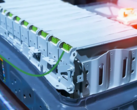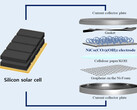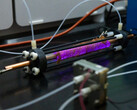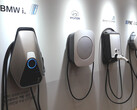For gasoline, it is just under 11 kilowatt hours per kilogram. For hydrogen, it is even 33 kilowatt hours. A high-performance accumulator, on the other hand, only manages a dismal 0.5 kilowatt hours with a lot of effort. Although rechargeable, which is naturally a big advantage, the battery cell's major disadvantage is its gigantic weight.
Hardly surprising then that the solid-state battery, which can at best store three to four times as much power as standard electric car batteries, is of great interest. From compact and economical electric cars to powerful tractor units, the potential applications are very promising.
At the same time, there are structural problems. This starts with optimum contact with the electrodes, which is difficult to achieve. And it continues with the formation of dendrites. These fine formations of lithium ions act like tiny branches of crystals and, in the worst case, cause short circuits within the battery that can trigger fires and explosions.
Promising division of tasks make for a more efficient battery
To prevent such scenarios, researchers at the Daegu Gyeongbuk Institute of Science and Technology (DGIST) in South Korea have developed a three-layer solid-state battery, with each layer having a very specific function. These layers are comprised of 1) the tried-and-tested flame retardant decabromodiphenyl ether; 2) zeolites, which are excellent ion exchangers and; 3) highly concentrated lithium salt for accelerated movement of the charge carriers.
The results are impressive. According to the recently published study, the capacity after 1,000 charging cycles is still 87.9% of the initial value with the efficiency almost unchanged.
Furthermore, the now-fireproof cell does not lose any energy density. Depending on the cell voltage, this is more than 700 watt hours per kilogram. Still much less than with conventional energy sources, but more than enough to be used very effectively in electromobility. The fact that it does not immediately burst into flames, unlike gasoline or H2, is also an advantage.















